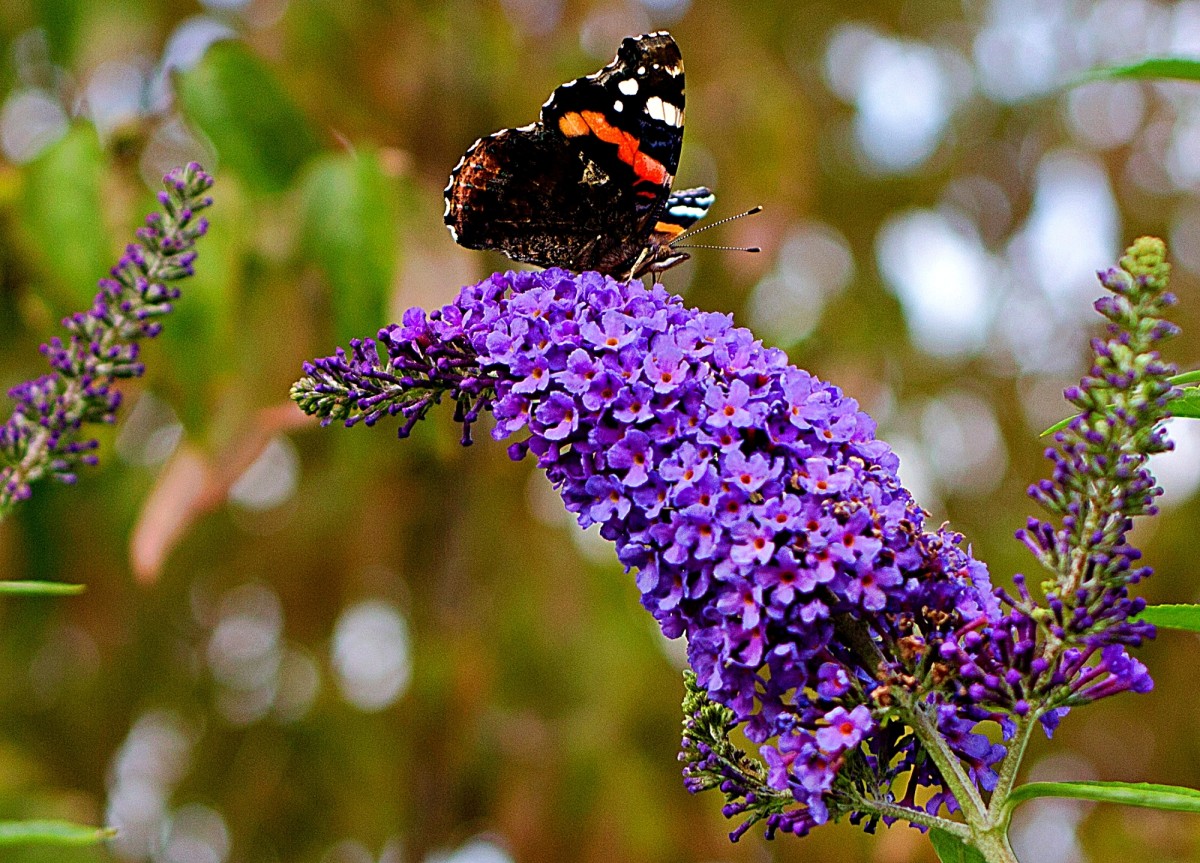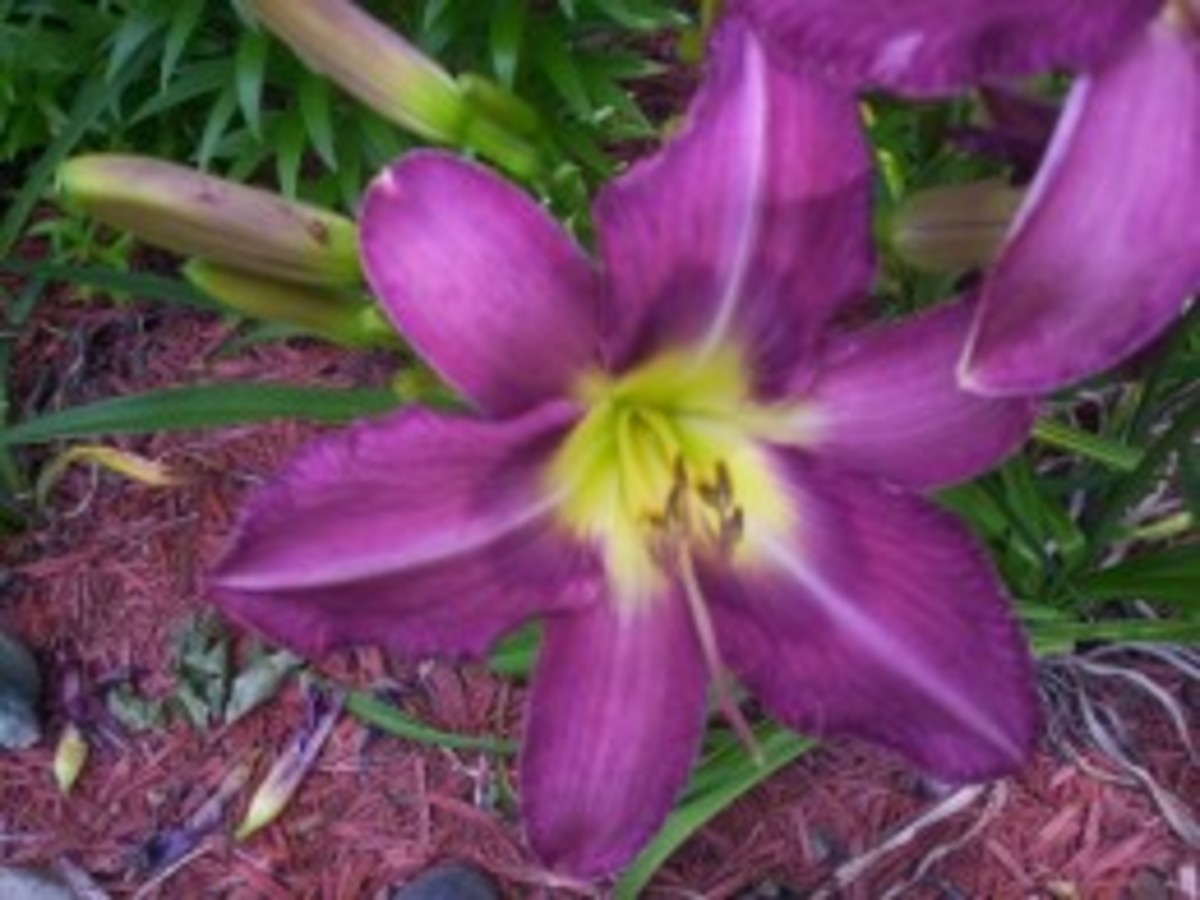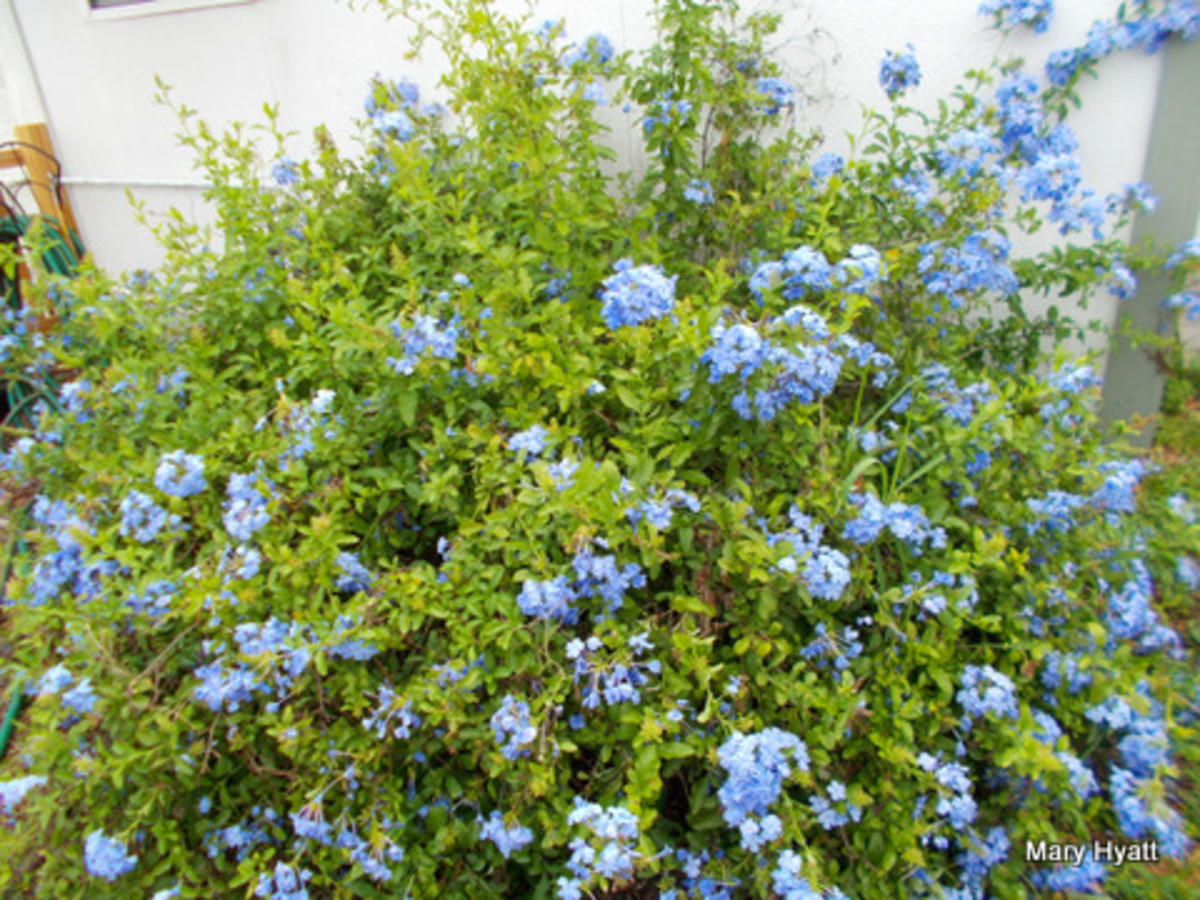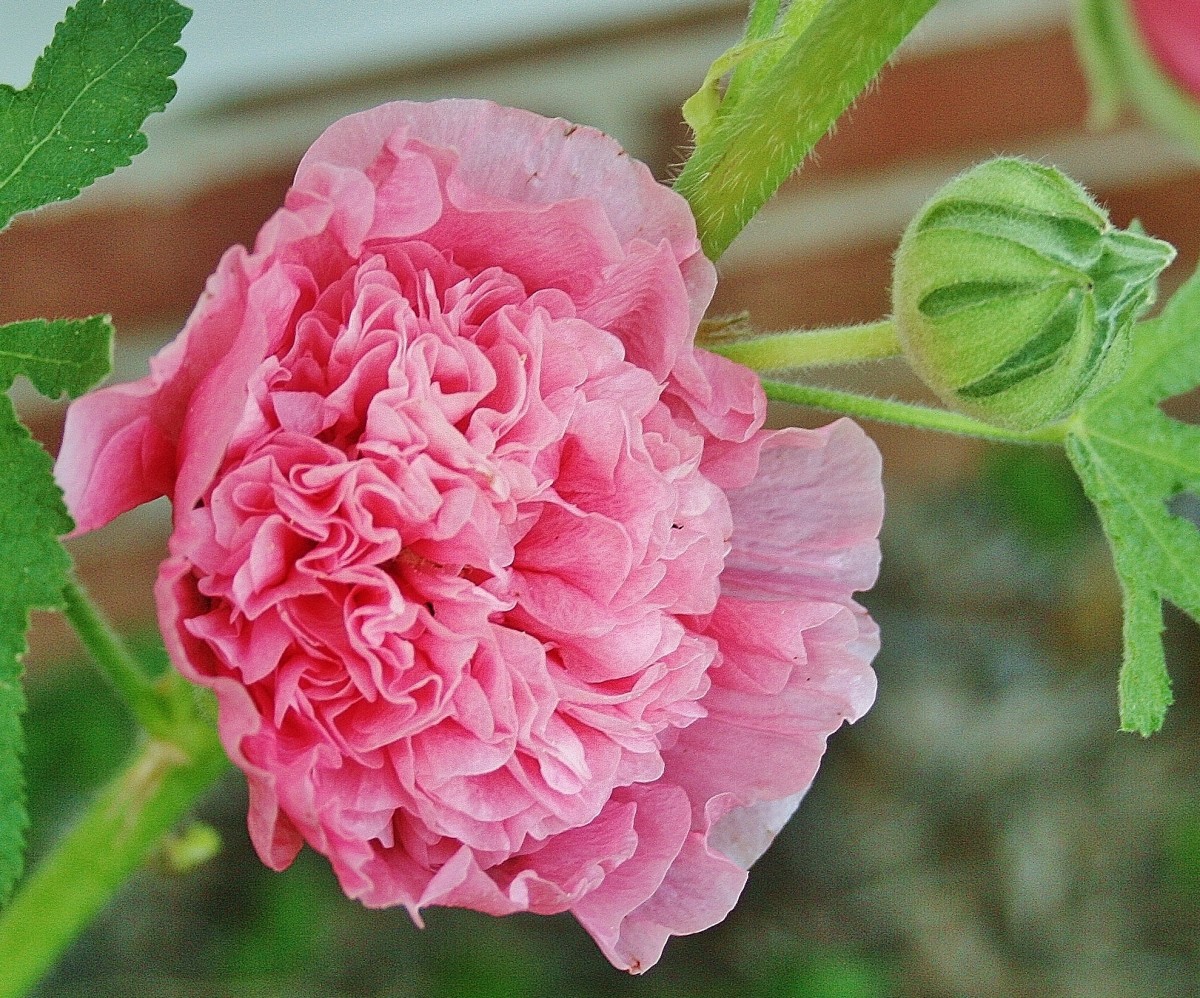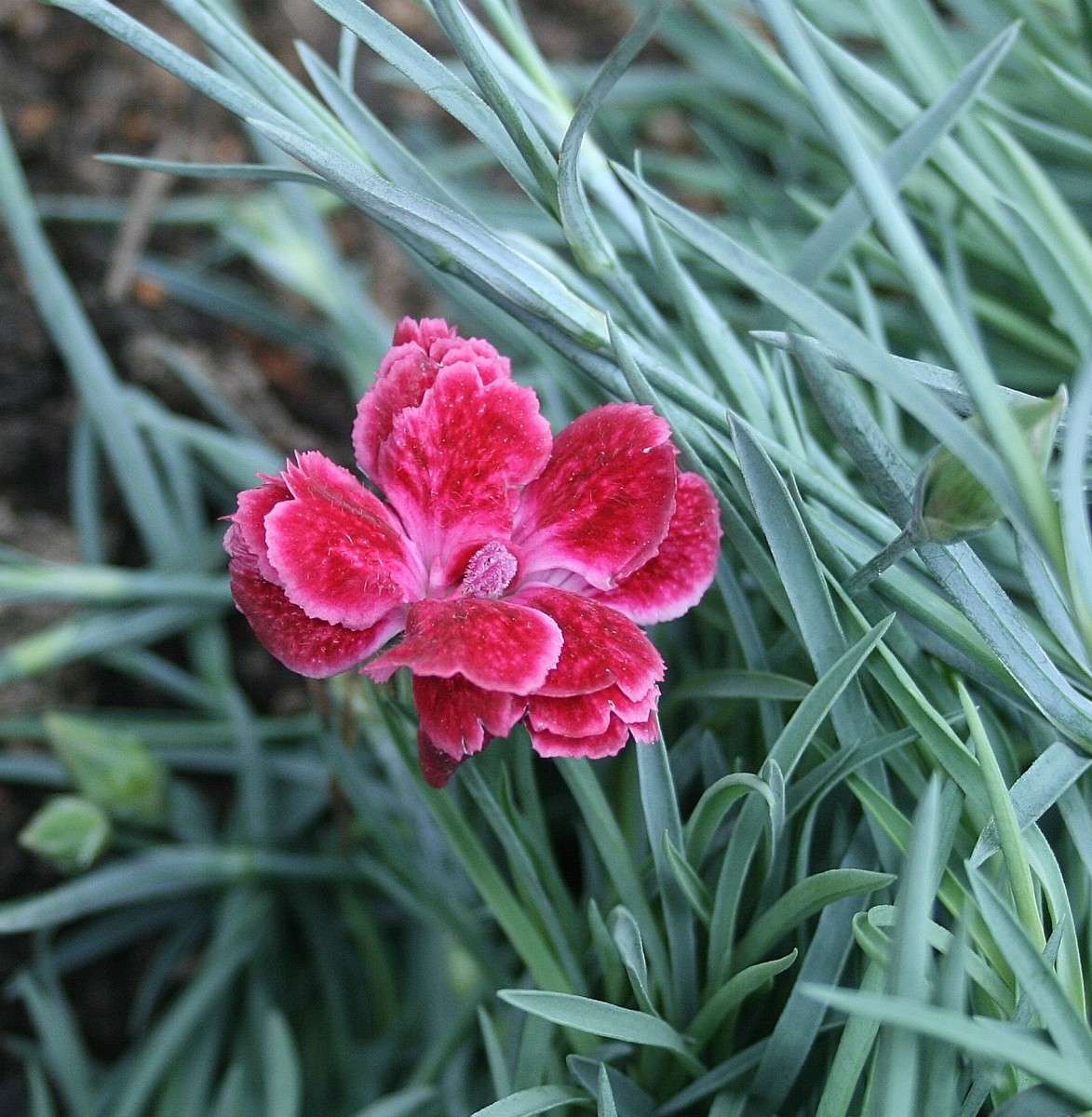Easy to Grow: Daylilies for Every Garden
If you're looking for a drought resistant, long lived, hardy and easy to care for perennial to solve some of your landscaping problems, then daylilies may be just what you're looking for.
With their arching sword like leaves and large trumpet shaped blooms, they can be a border, an accent, or a filler for hard to landscape areas. Although each bloom lasts only for a day, the plant can blossom for up to six weeks, a longer season than most perennials. The gorgeously colored blossoms add bright color to the garden for weeks.
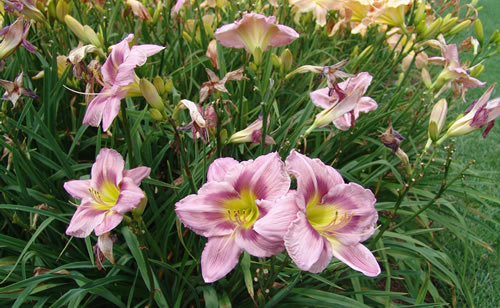
A Little History of Daylilies
Most people are familiar with the orange-flowered day lily (Hemerocallis fulva) or the smaller yellow-flowered lemon lily (H. lilioasphodelus) that were brought to America by early settlers. Known as homestead lilies, they traveled west with settlers, and since have both become naturalized along roadsides. These two lilies originated in China, just 2 of 13 species raised for both food (the flowers are edible) and medicine. This immigrant flower is now grown everywhere from Florida to Alaska!
Cultivars range from the dwarf varieties, about 12 inches tall with 2.5 inch flowers to ones up to 48 inches tall, with 6 to 8 inch blooms. Some bloom on tall stems that stand well above the foliage, some on short stems. There are even evergreen varieties, although most have foliage that dies back in fall and are dormant over winter.
Ongoing Color with Daylilies
Now over 12,000 different daylily cultivars are registered and on the market, and new ones introduced every year. Every shade of yellow and orange; pink, rose, purple, deep maroon and even greenish-yellow blooming cultivars are available.
A single daylily plant can send up as many as 12 flowering stems, and under ideal conditions each stem can show anywhere from six to 15 or more blooms, opening in succession. By selecting different cultivars that bloom early, midseason and later, you can have a flowering border from June until frost.
Some are even repeat blooming, flowering a second or third time.
Daylily Cultivars
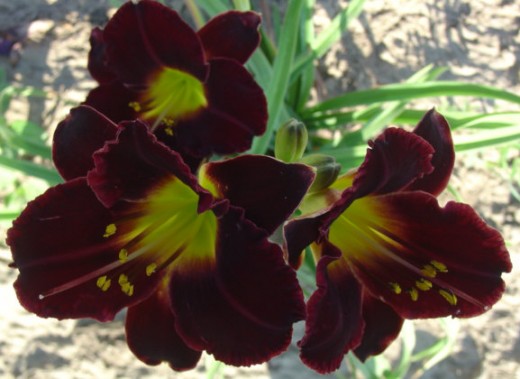
How to Grow Daylilies
Daylilies love a sunny spot, but like a bit of afternoon shade. They will thrive in any decent soil, and even poor soils as long as drainge is good. Care of daylilies is easy. If you plant the roots in fall, about 3 feet apart, they will establish nicely, and not need thinning for a while. They will quickly fill in, and the thick foliage will crowd out most weeds.
Give them a bit of compost or fish fertilizer in spring, but don't overfeed them. Too much fertilizer will encourage foliage at the expense of flowers. Daylilies are fairly drought tolerant, as their fleshy roots store water. They do appreciate a steady watering while in bloom. Disease and insect pests rarely trouble daylilies.
Daylily Care
Planting and Dividing Daylilies
Daylilies can grow happily for years before needing to be divided. However, if you want to increase your stock of a favorite, you can divide them more often. Daylilies can be divided almost any time, but you may want to wait until just after the plant has ceased flowering. Late-blooming varieties can be divided in the spring.
One way is to simply take a sharp spade, and plunge it into the root ball, cutting the clump in half, or even into smaller segments. Then replant each segment of the rootball, in good soil, and water it well. These tough plants will continue growing, coming back the next spring with increased vigor.
Another method is to cut back the leaves to about 6 inches. Pry up the entire clump with a fork. Tease it apart as much as you can with your hands, and separate the masses of roots by prying with two forks, back to back. You can hose off the root ball to see what you're doing. Separate the root ball into individual rootlets, each with some leaf.
Replant the divisions immediately, by making a small mound of soil in the planting hole, setting the crown of the plant on it and spreading the roots around. Plant the crowns less than 2 inches deep. This method will give you many more plants, but each will be smaller the first year. However, you'll find by year two your plants will be full and flowering well.
Dividing Your Daylily
This content is accurate and true to the best of the author’s knowledge and is not meant to substitute for formal and individualized advice from a qualified professional.
© 2009 Nicolette Goff



